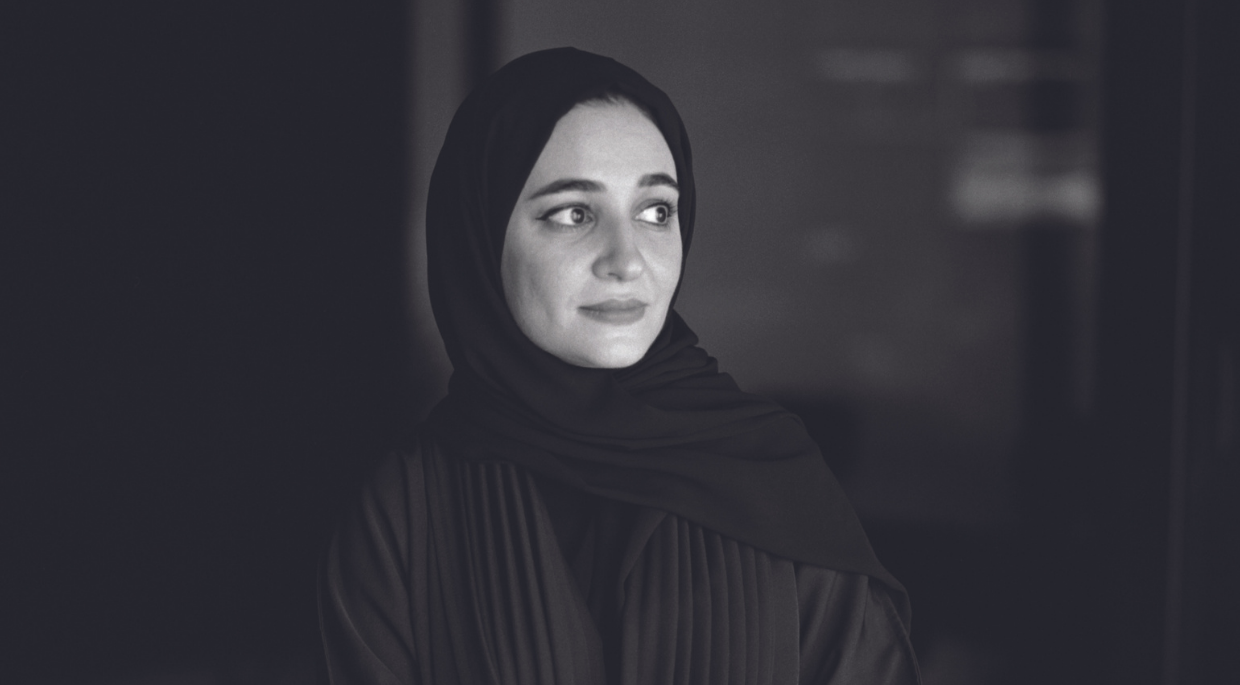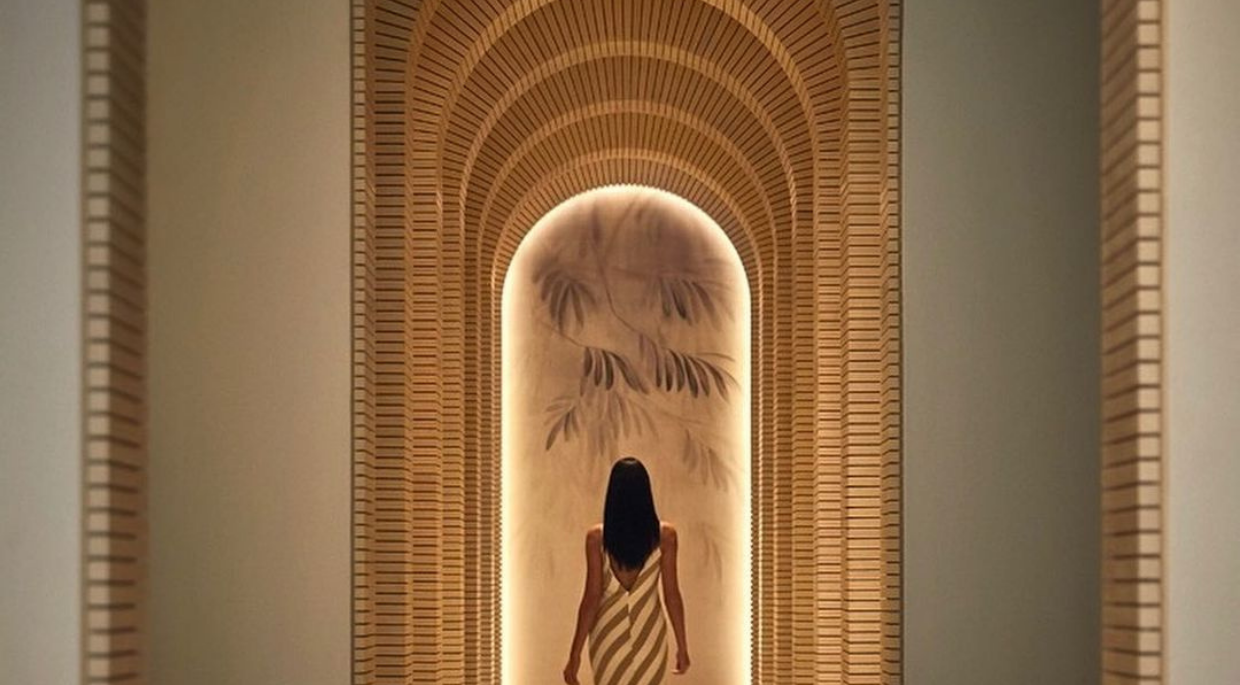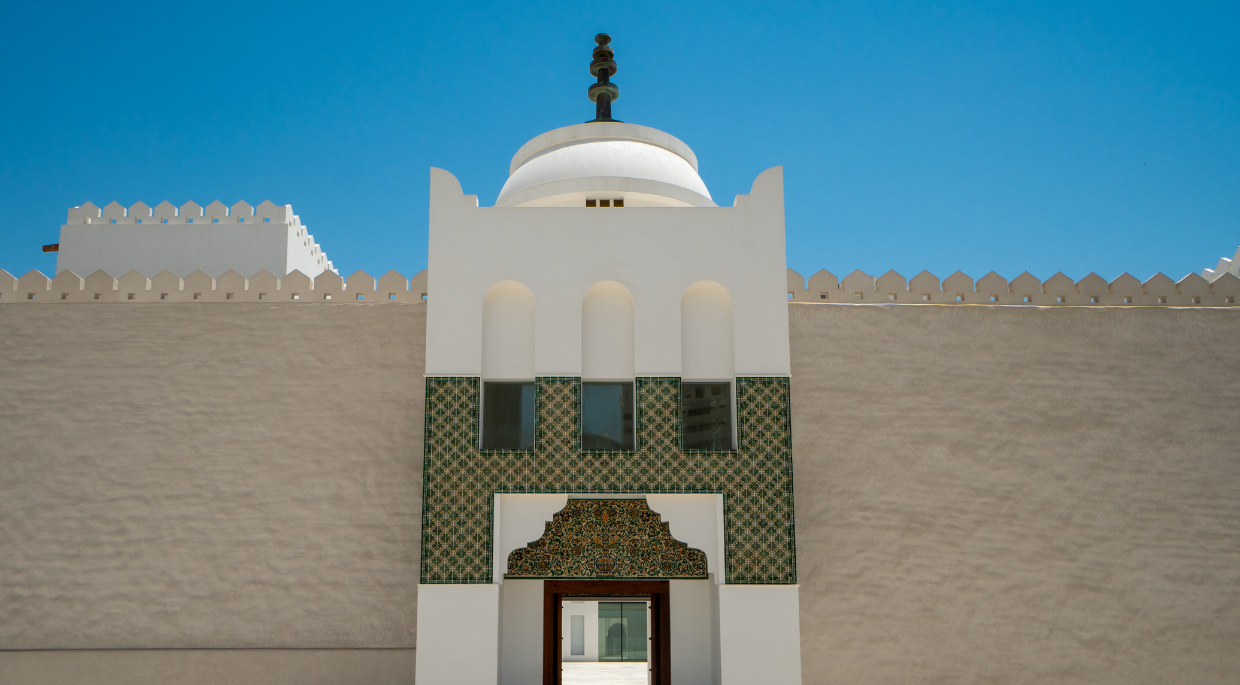
In the sprawling pavilions of Expo 2020 Dubai, trends are sparked, exceptional ideas are presented, and scintillating insight is offered into the world’s rich cultural production and technological innovations. Amongst them, one buoyant pavilion stands tall as a real tour de force that offers generous engagement with the role of women in shaping the future of the world.
It’s the Women’s Pavilion, in collaboration with Cartier, the first standalone at a World Expo since the 1900s that has been entirely dedicated to women, with a ‘New Perspectives’ exhibition that showcases the central role they continue to play as global changemakers. A big hook of the space is that it has brought together a diverse community of creators to contribute to its design and curation.
Part of its impressive roster is Emirati creative Kholoud Sharafi, co-founder and Director of Design Communication at Dubai-based multidisciplinary design firm Tinkah, who was roped in to develop the pavilion’s visual identity – the logo. “The brief was to develop a brand identity that embodied the values and narrative that had been established for the Women’s Pavilion,” says Kholoud. “A key element of the space was the façade and we had to be mindful of the placement of the logo on it,” she explains.
The pavilion preserves and conveys the important role women have played in the past, are playing in the present, and what we should look forward to in the future. We considered these aspects when defining the pavilion’s visual identity.
The project began as a design sprint towards the end of 2019 and the main logo was developed during the initial weeks of 2020. For the logo, Kholoud and the team at Tinkah took a cue from how the pavilion charts the milestones achieved by women, both known and unknown. “The Women’s Pavilion celebrates the seen and unseen women from yesterday, today and tomorrow, with a common purpose of changing the world. In response to the concept narrative driven by the seen and the unseen, the brand identity explores the contrast between femininity and impact,” she explains.
The design also includes references from Cartier’s own creative heritage. “The brand commits itself to preserving and conveying its heritage, and its approach and creativity are recognized in the cultural and artistic worlds. The pavilion preserves and conveys the important role women have played in the past, are playing in the present, and what we should look forward to in the future. We considered these aspects when defining the pavilion’s visual identity.”
Founded in 2012 by an all-women team that includes Kholoud, along with creatives Reem Al Ghaith and Abeer Tahlak, Tinkah boasts a distinct design language that nods to versatility. “Our firm follows a multidisciplinary approach. Every project comes with its unique challenges, so the solution also needs to be unique,” she states.
“It’s never just about the aesthetic. A brand can have a strong aesthetic identity, but the question comes back to what it’s trying to convey. Similar to how a sculptor takes away from a block of clay to reveal the final piece, we too need to take away from all the information that’s gathered as a part of our process in order to arrive at a brand identity.”
One of Tinkah’s recent milestones is creating the brand identity of the UAE’s ‘Year Of The Fiftieth’, which commemorates 50 years of the country’s formation this year. “We’re excited about many of our recent projects and when the time is right, we’ll reveal them to the world,” she reveals.
As a design practitioner, Kholoud is hopeful that Expo 2020 Dubai and endeavors like the Women’s Pavilion will open doors for global and regional creatives. “Our hope is that the platform will support the creative community by establishing standards and practices that recognize, promote and give credit to them for their contributions.”

